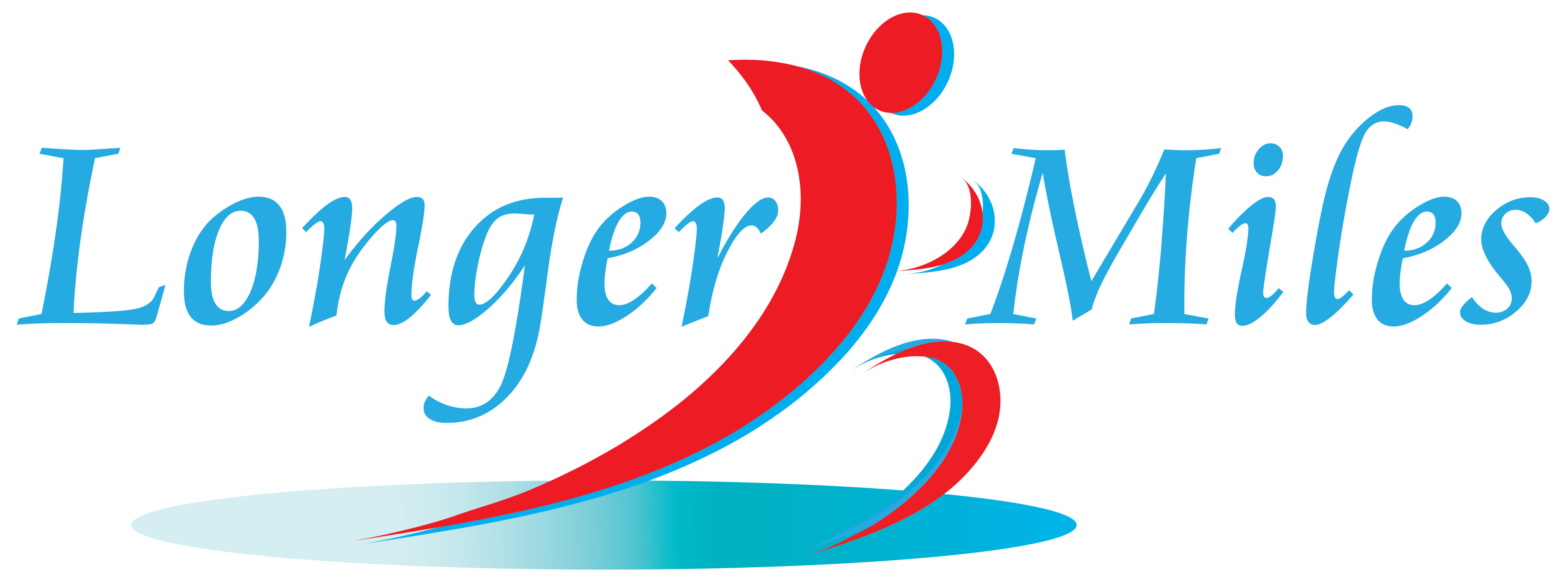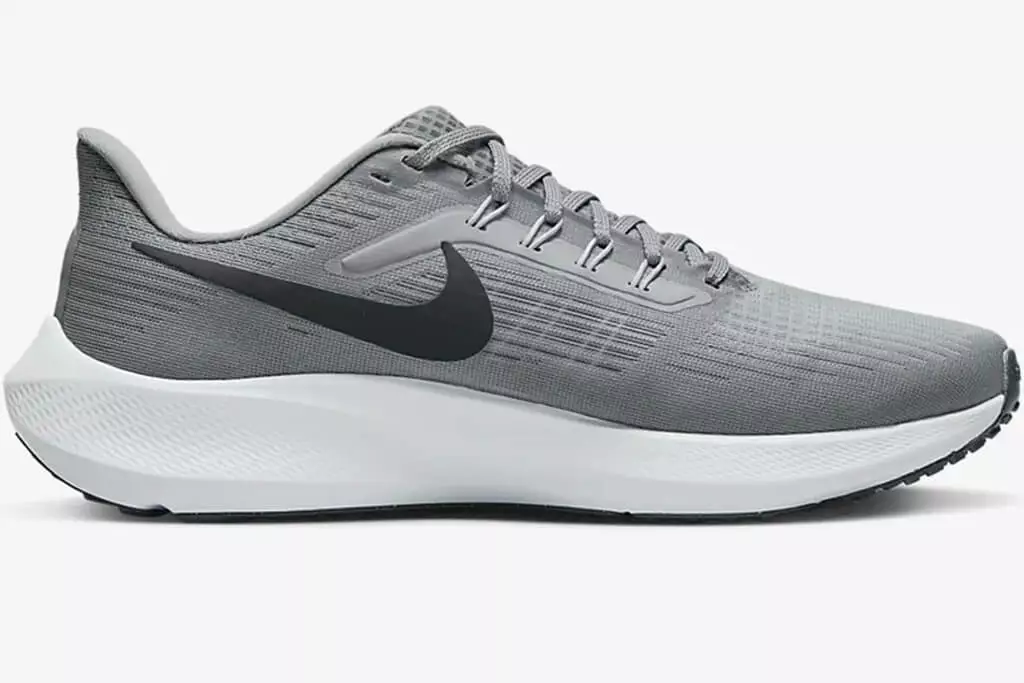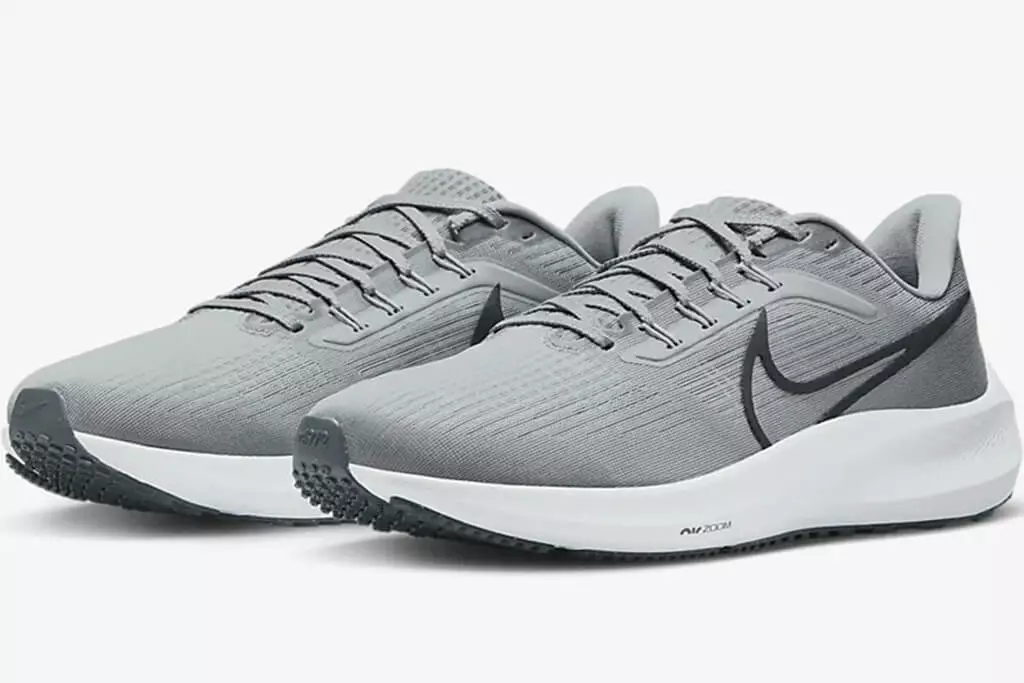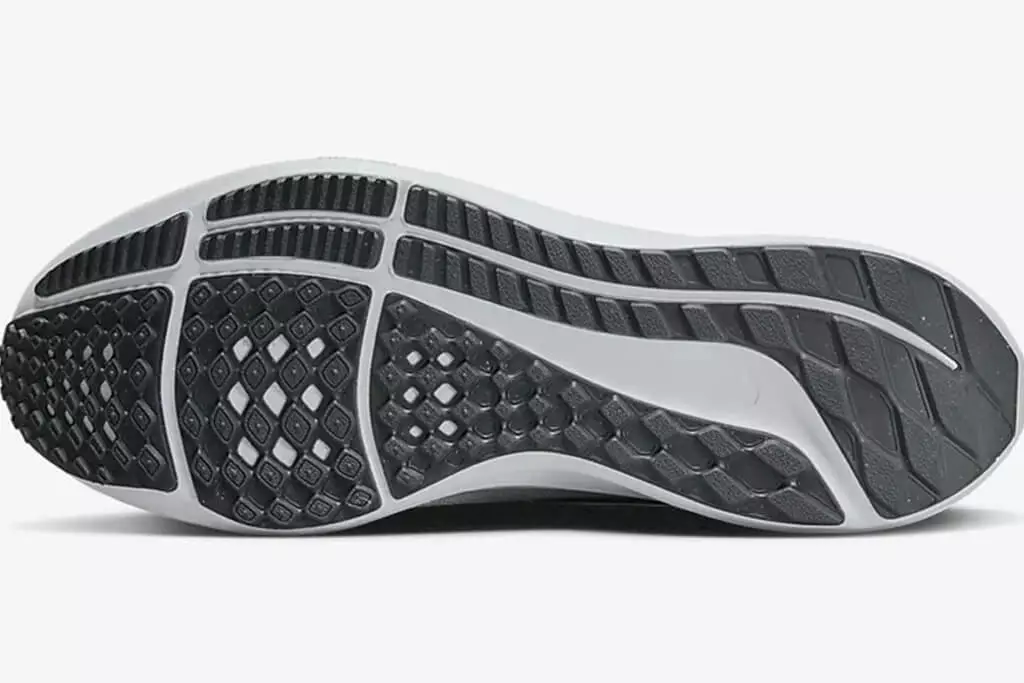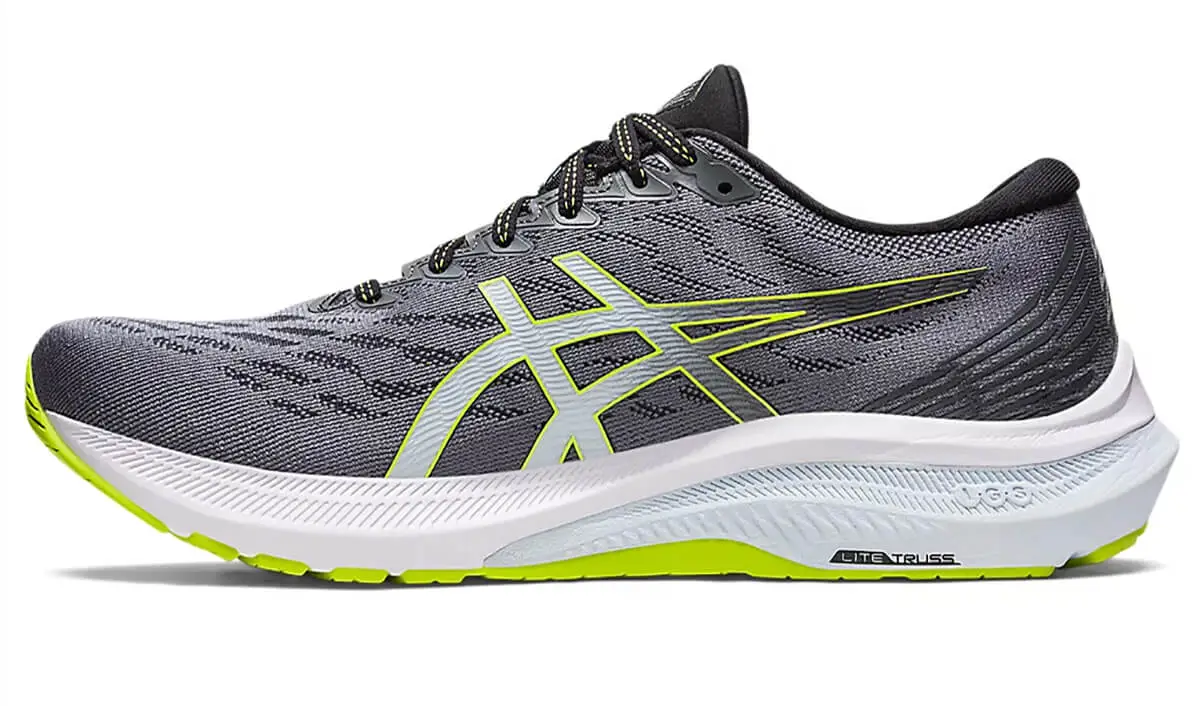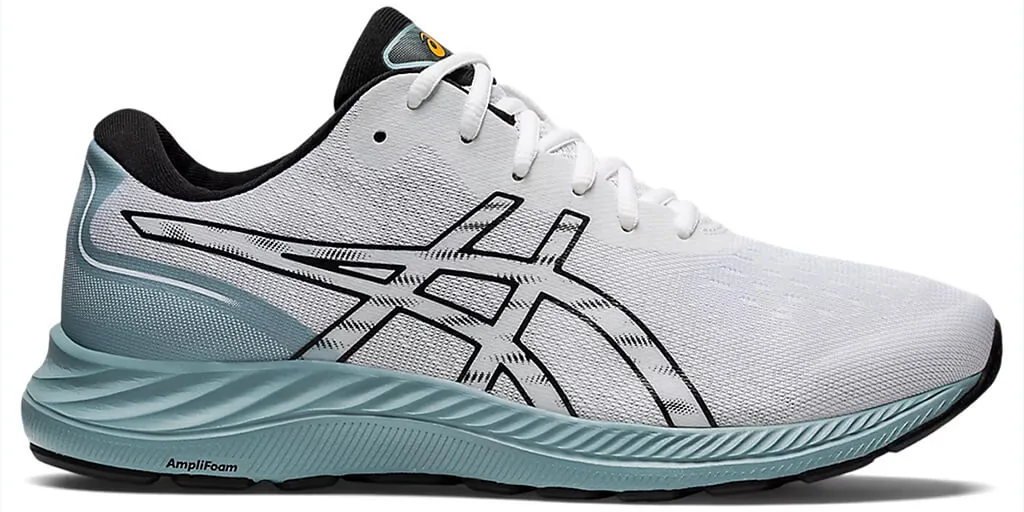| SCORE | 8.7 |
| Heel Drop | 8mm (37 mm on the heel and 29mm fore foot making) |
| Weight | 10.9oz (310g) for U.S. size 12 |
| Sizing | True-to-size |
| Shoe Type | Daily Trainer (Mid-range) |
| Running Surface | Road, light trail and grass |
| Pace | Tempo |
| Pros | Cons |
|
|
Introduction
The Nike Air Zoom Pegasus is a popular running shoe among runners. I consider Nike Pegasus the most popular series within Nike’s lineup. The Pegasus series are known for lacking flare, except for practicability as daily trainers.
They have stood the test of time, with Nike constantly attempting to make improvements with every version and meet the ever-changing runners’ needs. Notably, the recent versions are ‘cooler,’ yet solid, but the 39 version has taken a different direction.
I loved the Nike Pegasus 36. It served me well in every training session except for races. The Nike Pegasus 37 and Nike Air Zoom Pegasus 38 were a bit of a disappointment. They were practical training shoes but weighty, less agile and versatile than the Nke Air Zoom Pegasus 36 version. I was quite hesitant about the Nike Air Zoom Pegasus 39 until I heard runners prasing Nike for tuning this new version into a nimble, versatile and more responsive shoes than the previous versions.
The biggest change to the shoes is the shading of the brick-like weight in the previous version to make it a lightweight daily trainer. At US size 12, the Men's Air Zoom Pegasus 39 weighs 10.9 ounces (310 grams). The last model weighed 12.2 ounces (345grams), a difference of 1.3 ounces, meaning you are staring at a less bulky and more versatile Nike Pegasus 39.
Nike’s sole intention was to create a versatile daily training shoe considering that the recent versions were less versatile. Hence, in this version, Nike has done away with the things that dimmed the light of the previous two versions. Things have also been simplified to a bare minimum.
Take Away
The Nike Pegasus 39 is a comfortable, versatile, stable, and durable daily trainer. The extended React foam in the midsole makes it more responsive, soft, and faster than the previous versions. Though it doesn’t meet the cut mark of a speed shoe, it does almost everything, including stretching the running miles.
Nike Air Zoom Pegasus 39 Instant Impression
I was excited when word went around that the Nike Pegasus 39 is comparable to the Nike Pegasus 36. I have owned the Pegasus 36, and it was one of the best daily trainers I ever had. It had enough cushioning and was nimble, highly breathable, excellent fitting and responsive. The 37th version was indifferent to Nike Pegasus 36, but the Nike Pegasus 38 exhibited traces of the Pegasus 36. Unfortunately, it fell short of my expectations since it was uninspiring to run in.
I loved the improvements Nike brought in The Nike Air Zoom Pegasus 39. The weight improvement was apparent straight out of the box. I loved the fitting and found the upper comfortable and huggy.
I instantly noticed high responsiveness in the heels during my initial run. The energy return was nothing close to what I experienced with the Pegasus 38 and 37. My initial training plan was to do a 5k, but that pacy ride compelled me to switch to three-minute interval tempo runs.
Ideally, Pegasus has never been my choice for tempo runs, but the Pegasus 39 was out of the ordinary. It felt fast, lightweight and slightly snappy underfoot. The experience changed my mind about the Nike Pegasus 39. It was spot-on! It reminded me of the Nike Pegasus 36. Also, I did not experience any quality issues.
Overall, my initial running test turned out to be positive. I liked the ride. It was between hard and soft, and the cushioning was great and comfortable.
Nike Air Zoom Pegasus 39 Upper Components

The fitting is not so indifferent to the Pegasus 38 since the Nike Pegasus 39 fits pretty well, just like the Pegasus 36.
The heel collar has substantial padding, neither plush nor thin, but just enough. I noticed this version has a lower profile collar, especially around the ankles, and I appreciate Nike’s intent. I felt free around the ankles. The heel flare also has a semblance to the one in the Pegasus 36.
The upper of Nike Air Zoom Pegasus 39 has minimal overlays. Besides, Nike went back to utilizing the flywire like in the Pegasus 34 to solve the fitting issue that was apparent in the 37 and 38 versions. It replaced the thick lace loops with a flywire system around the midfoot area, and it does well in providing a snug-like fitting.
The flywire also helps provide a secure fitting across the top of the foot. This design works well with the substantially cushioned tongue because I hardly feel any hotspot on top of the foot. As the laces tighten across the instep, the cushioned tongue does well in dispelling pressure. Therefore, flywire does well to keep the foot in place.
Besides, the lace choice is exceptional. Nike went for flat and flexible laces. They help to repel pressure on top of the foot any moment I attempt to go for a snug-fitting. Furthermore, the lace length is fine to accommodate a runner’s knot and doesn’t loosen during running.
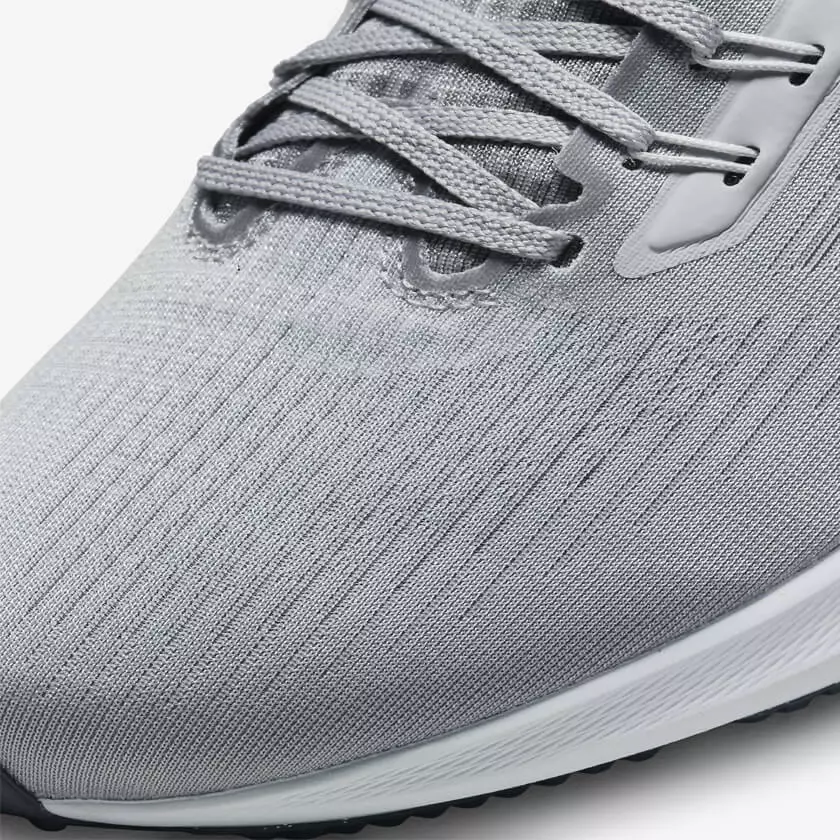
Overall, the upper has a comfortable fitting and unrestrictive, just like in the Pegasus 38. Nike did well by retaining what worked int he previus version and changing what needed changing. Therefore, Nike transferred the best features of the Pegasus 38 upper layer into the Pegasus 39.
The toe box is not too voluminous but well streamlined and roomy enough for the toes to splay out naturally. The material is light on the foot, huggy, and the upper is entirely functional. It is also roomy enough to accommodate summer and spring runs.
I have nothing to complain about the upper of the Nike Pegasus 39. I find the upper mesh remarkably breathable with a pronounced snug-fitting around the midfoot and heel sections with a good amount spaces in the right areas. The 38 version was pretty tight around the midfoot and Nike has correctyed that mistake.
Nike Air Zoom Pegasus 39 Midsole Design and Performance
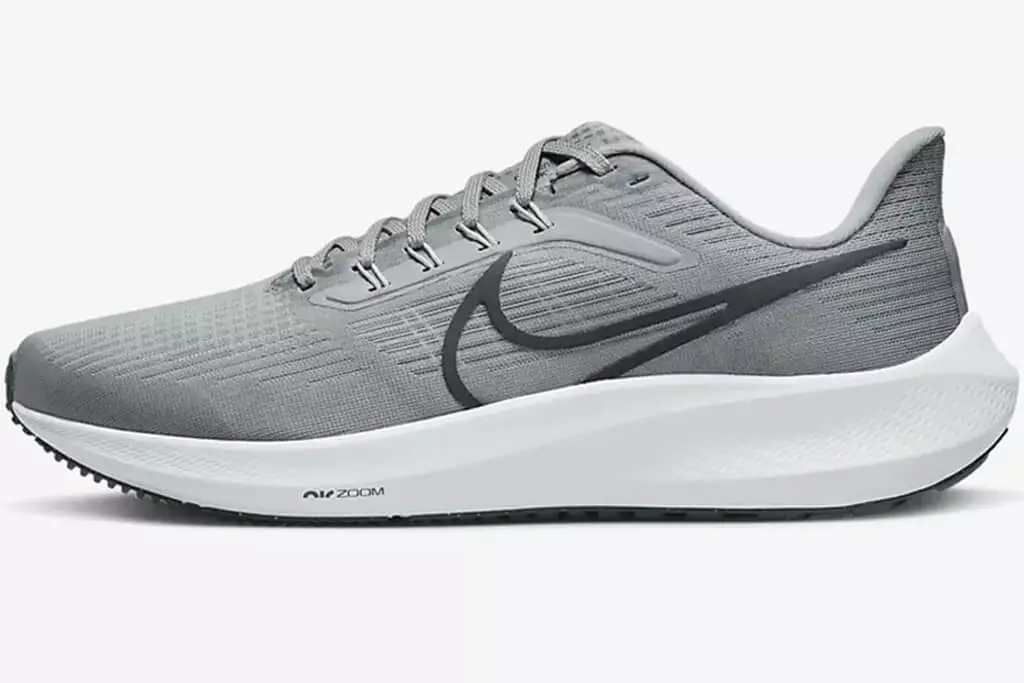
There is a slight change in the midsole compared to the previous version. The Pegasus 38 featured an air unit in the forefoot area and was significant in enhancing propulsion. The Nike Air Zoom Pegasus 39 has an additional Zoom air unit in the heel section. It makes a huge difference because the midsole exploded at fast paces. However, I could not feel the impact of the air unit when running at slow paces.
Nike maintained the firm and responsive feel of the previous version, but the Nike Pegasus 39 feels more refined. It is more responsive and offers a familiar sensation of the React foam, but with a more squashy feeling than when I ran in the previous three Nike Pegasus models.
I think the additional air units in the heel and the substantial weight loss have worked magic for this shoe. I have had an interesting experience with Nike Pegasus 39. I can do the easy paces effortlessly, like eight to nine minutes per mile. Interestingly, the real action starts whenever a turn-up the pace. I can do at least six minutes and thirty seconds per mile when running at a good speed. The greatest experience is that Nike Pegasus 39 exhibits an energized feeling at high speed.
The Zoom air unit and the React foam seem to come alive at high speed and a slow pace. The energy return around those air units is exceptional. It made the tempo runs extremely exciting and short marathons an easy challenge. Also, the air units in both components make the transitioning from heel propulsion to toe unbelievably seamless.
Nike removed the sharp back-heel and made it blunt, and signed a Nike logo on it. The decision is esthetically on point.
The midsole design combined with the tuned upper mesh makes the Nike Pegasus 39 a do-it-all running shoe. The uniqueness is the agile nature of Pegasus 39 as a daily training shoe, which can be attributed to Nike’s Zoom React foam. Still, I am glad that Nike maintained that solidness.
Nike redesigned the outsole, so it is a deviation from the traditional outsoles in the Pegasus series. The Pegasus has one of the most aggressive outsoles of daily training shoes. The outsole has a six-section setup glued onto the midsole material. The outsole forms a waffle-like protrusion pattern in the medial section but a more stretched-out slab rubber on the lateral side.
The lugs on the heel section are large and flat. The outer rubber patterning is not only easy on the eye, but also performs a functional role. Despite the small gaps in the medial side, I hardly pick up major debris whenever I run on a dirt trail. They are easy to clean.
The grip is exceptional across the on-road, light trail and wet grass. It is not surprising that the traction is great, considering the amount of protrusion Nike put on the outsole. Despite the robustness of the outsole, this shoe still feels nimble on foot. The redesigning of the outsole makes the Pegasus a road and light trail running shoe.
Nike Pegaus Air Zoom Overall Performance
Running a 5k feels enjoyable with the Nike Air Zoom Pegasus 39, especially for a heel striker like me. The responsive air pod unit in the heels makes the heel–to–toe transitioning extremely effortless. The air pod unit in the forefoot also enhances pretty well to create a perpetual motion, while the broad outsole base guarantees stability. The hugging upper mesh and the midsole work hand-in-hand to create a fulfilling running experience.
Overall, the Nike Air Zoom Pegasus 39 appeals to a runner who loves do-it-all daily training shoes. The Nike Pegasus 39 is above most daily training shoes because it is faster, solid, and stable on multiple terrains.
Why Should Buy Nike Air Zoom Pegasus 39
The category of daily training shoes has loads of options. The closest competitor to the Nike Pegasus 39 is the Adidas Adios 6, Puma Velocity Nitro 2, and Asics Cumulus 24, which are more lightweight, soft and with profound pop; thus, excellent as a racing shoe compoared to the Pegasus 39.
The Cumulus 24 can accommodate wider feet than the Pegasus and Adios. Still, Nike Pegasus 39 is easily the better option for training than the Adios 6. The reason is that Nike Air Zoom Pegasus 39 has plenty of cushioning, reduced weight, smooth ride with high responsiveness. It can also handle a variety of terrains than the shoes mentioned above.
You can still do speed-runs and tempo runs, but don’t expect the traditional squishiness. However, the cushioning is just right! It leaves room for a little firmness associated with daily training running shoes to allow a variety of running styles and sessions.
Moreover, Nike fixed what went wrong in problems in the Nike Pegasus 37 and 38 and picked on the successes of the Pegasus 36 to make the Nike Air Zoom Pegasus 39 a better daily trainer. The React foam has made this shoe softer and faster than the previous versions, and the outsole design makes it more versatile for various terrains. The Nike Pegasus 39 is the best since the Pegasus 36.
Furthermore, Nike has stripped down the weight of this shoe significantly. Nike Pegasus 39 also doubles as a road and light trail running shoe.
Any qualifying purchases via the Amazon affiliate links earn us small commissions, which will help us continue with the excellent work of bringing you quality shoe reviews.
Reviewed by Dick Harrison
Harrison is an Australian who lives in Sidney. He trains for fitness and does it like a pro. Harrison has the experience of running in various running shoes and understands the technology behind each shoe model he has worn.
